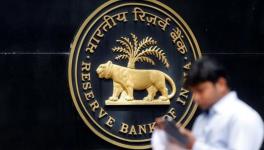Since September 2018, NBFC Sector Crisis Has Only Intensified
Image for representational use only.Image Courtesy : The Financial Express
New Delhi: The Central government is working towards bringing non-banking financial companies within the ambit of the Insolvency and Bankruptcy Code (IBC), but in a tweaked form, it is learnt.
While a robust resolution plan for shadow banks in the country is the need of the hour, as the sector has been in crisis for more than a year now since the collapse of the Infrastructure Leasing and Financial Services (IL&FS), data available in the public domain and analysts indicate that the crisis is deeper and is one of the central reasons behind the current economic slowdown.
The Times of India newspaper reported that the government may set up a resolution corporation which will take over reigns of an NBFC once it falls in the ‘critical’ category. The corporation will be on the lines of the one proposed in the Finance Resolution and Deposit Insurance Bill, which aimed to classify financial services entities under low, moderate, material or critical entities.
In the case of IL&FS, the Central government in October last year appointed a new board replacing the earlier top management, which has been working on resolution of IL&FS entities. The government recently allowed Il&FS board chairman Uday Kotak to continue in his position for one more year. Kotak on Tuesday said he was confident that over 50% of the total debt of Rs 97,000 crore of the bankrupt IL&FS Group would be “recovered, restructured and resolved.”
Several government agencies, including Serious Fraud Investigation Office, Securities and Exchange Board of India and Reserve Bank of India are probing the financial irregularities committed by the previous top management of the IL&FS.
While the IL&FS fiasco has triggered the current crisis in the shadow banking sector, data indicate that the trajectory of the sector in the last one year has been worrisome for the economy.
Consider these figures: In a span of six months, the outstanding borrowing of NBFCs grew by 40% from Rs 15.72 lakh crore at the end of September 2018 to Rs 22 lakh crore at the end of March 2019.
Furthermore, according to RBI data, gross NPAs (non-performing assets) or bad loans of NBFCs stood at 6.6% at the end of March 2019 against 5.3% at the end of March 2018. On the other side, bank lending to NBFCs has also seen a substantial rise. Also, NBFCs owe an outstanding amount of Rs 6.4 lakh crore at the end of March 2019. This is a 22% increase compared with the previous year when the debt was Rs 4.9 lakh crore.
It may be recalled that the RBI cancelled 1,701 NBFC licenses in FY2019 for failing to meet minimum capital provisions. This is much higher than the number of licenses cancelled in FY18 at just 26, according to a report in Mint.
According to a latest report by brokerage firm Jefferies, defaults by NBFCs in the last one year have escalated resulting in ruptures in the credit market., The report has also raised questions on the credibility of credit ratings itself. After an analysis of 70 NBFCs and Housing finance companies, the report found that “two-thirds of them are still rated ‘AAA’ while less than 10% are rated 'A' or below.”
Even mutual funds, which were crucial lenders for NBFCs have drastically cut funding to the NBFC sector, owing to the crisis.
In July, Dewan Housing Finance Corporation (DHFL) began defaulting on its debt payments and another NBFC, Altico Capital, began defaulting in September. In another case, Indiabulls Housing Finance Company is now in the spotlight with whistleblowers alleging the company indulged in massive financial irregularities.
As per reports, the number of NBFCs registered with RBI was 9,659 as on March 31, of which 88 were deposit accepting and 263 systemically important non-deposit accepting ones.
Sinking Real Estate
The worst hit sector in the crisis is real estate. According to Anarock Property consultants, there are $63 billion of stalled residential projects across the country. This is mainly due to fund crunch to the project developers, a cascading effect of the crisis in NBFCs and HFCs (housing finance companies).
According to another analysis by India Ratings, close to 70% of builder loans on the books of NBFCs are under principal moratorium. “The outstanding commercial real estate loans by banks, NBFCs and housing finance companies (HFCs) stood at Rs 6 trillion in financial year 2018-19, of which Rs 1 trillion was from NBFCs,” Pankaj Naik, associate director of financial institutions at India Ratings told Mint. He estimated that 70% of this Rs 1 trillion will come up for staggered repayment from fourth quarter of this financial year.
Get the latest reports & analysis with people's perspective on Protests, movements & deep analytical videos, discussions of the current affairs in your Telegram app. Subscribe to NewsClick's Telegram channel & get Real-Time updates on stories, as they get published on our website.
























